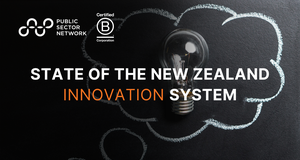Navigating the Future Workforce: 6 Trends Transforming the Australian Public Sector


The Australian public sector is experiencing a significant transformation as it grapples with the challenges and opportunities presented by the evolving landscape of work. Whether it’s tech disruptions presenting more efficient ways of delivering work, or the changing mindset about how to work from younger, newer talent; there is a great shift that is coming through. In this blog, we will explore the key trends shaping the future of the Australian public sector workforce and the strategies that will empower it to thrive in the face of change.
Digital Transformation
The rapid advancement of technology is at the forefront of reshaping the workforce. Automation, artificial intelligence, and data analytics are becoming integral parts of public sector operations. As government and public sector organisations implement these tools to improve processes, there is a need for the workforce to be highly digitally literate and savvy.
Flexible Work Set Up
Over the last three years, there has been accelerated adoption of remote work, and it is here to stay. The younger generation that are coming into the workforce, have shown that remote work is critical to them when it comes to accepting offers or for staying at a workplace. Flexible work can allude to more than just opting to work from home versus the office. It can also be a preference in signing up for a full-time job or contractual agreements. This shift towards remote work not only enhances work-life balance but also opens up opportunities for a more diverse and inclusive workforce, as location barriers are dismantled.
.jpg)
Emphasis on Soft Skills
As technology takes over routine tasks, the importance of soft skills such as creativity, critical thinking, and emotional intelligence will increase. The Australian public sector must prioritise the development of these skills among its employees to foster innovation and effective collaboration. Strong communication and adaptability will be crucial as teams navigate changing work environments.
Diversity and Inclusion
The future workforce will be more diverse, reflecting a range of backgrounds, perspectives, and experiences. Government agencies must proactively address diversity and inclusion to create an environment where all employees feel valued and supported. This inclusivity will not only enhance creativity but also ensure that public policies and services are representative and responsive to the needs of the entire population.
Agile Workforce Planning:
The traditional approach to workforce planning will evolve into a more agile and responsive model. Government agencies must be able to anticipate and adapt to changes in demand for specific skills. This requires continuous monitoring of workforce trends, strategic planning, and the development of a talent pool that can be deployed as needed.

Ethical and Responsible AI Use
With the integration of artificial intelligence, the public sector must prioritise ethical considerations in its use of AI. Employees should be equipped with the knowledge and skills to navigate the ethical challenges associated with AI technologies, ensuring that government actions align with societal values and principles.
The future workforce of the Australian public sector is undergoing a profound transformation, driven by technological advancements, changing work dynamics, and societal shifts. To thrive in this evolving landscape, government agencies must be proactive in adapting their strategies, investing in employee development, and fostering a culture of innovation and inclusivity. By embracing these changes, the Australian public sector can position itself as a leader in the delivery of efficient, responsive, and citizen-centric services.
Want to Learn More?
These six workforce trends, plus so much more will be discussed in-depth by a panel of HR, Workforce, People and Change leaders at the upcoming Future of Workforce Virtual Event on March 20th. Learn more or register your free ticket today!
- Related Event
- Future Workforce
- Communities
- Region
-
Australia
Published by

Most Popular


















